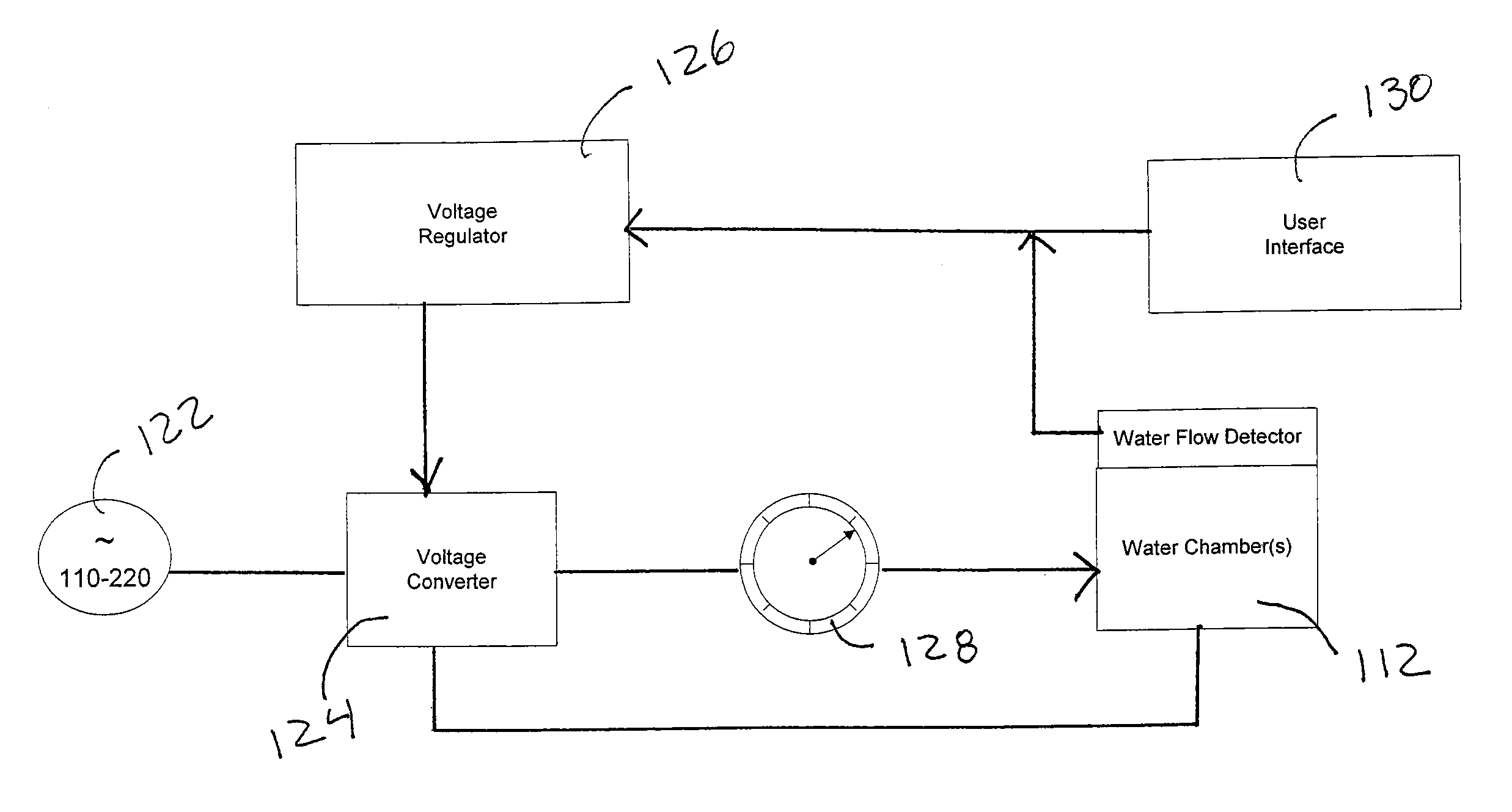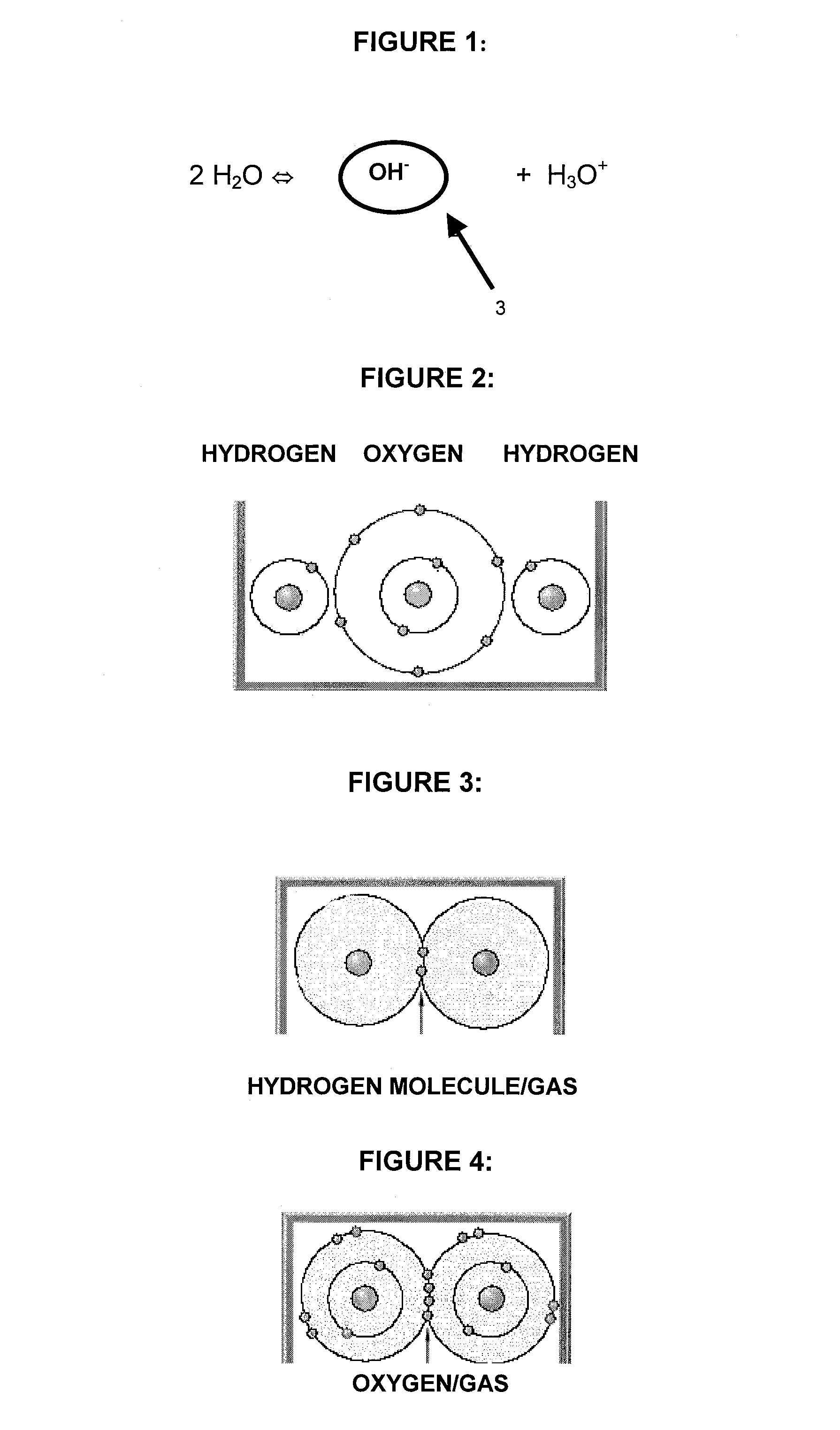Process and apparatus for decontaminating water by producing hydroxyl ions through hydrolysis of water molecules
a technology of water molecules and hydrolysis process, which is applied in the field of disinfecting processes, can solve the problems of limiting or substituting chemical products which might damage the environment, limiting the efficacy of the process, and the limitations of the development and implementation of techniques, so as to minimize the current limitations of hydrolysis of water molecules, ensure the effect of the quantity of generated hydroxyl ions, and maximize oxidation
- Summary
- Abstract
- Description
- Claims
- Application Information
AI Technical Summary
Benefits of technology
Problems solved by technology
Method used
Image
Examples
Embodiment Construction
[0025]The most relevant measures of REDOX potential are detailed in TABLE 1:
[0026]
TABLE 1Oxidizing species generated by the system of the invention.REDUCTION POTENTIAL - OXIDATION (ORP)Chemical NameFormulaeMeasure ORPFluorineF22.25Hydroxyl ionOH−2.05Mono-atomic oxygenO−1.78OzoneO31.52Hydrogen peroxideH2O21.30Potassium permanganateKMn2O71.22Hypochlorous acidHClO1.10Chlorine (Gas)Cl21.00OxygenO20.94Sodium hypochloriteNaClO0.69
[0027]Various terms used herein and descriptions thereof are presented below.
[0028]Water structure: The water molecule is a highly stable chemical substance. It neither cleaves nor ionizes easily. The H2O molecule is composed of two hydrogen atoms and one oxygen atom (See FIG. 2).
[0029]Hydrogen: At standard pressure and temperature, elemental hydrogen is a gas with the molecular formula H2. Both hydrogen atoms share two electrons (See FIG. 3).
[0030]Oxygen: At standard pressure and temperature, elemental oxygen is a gas with the molecular formula O2, with 8 proton...
PUM
| Property | Measurement | Unit |
|---|---|---|
| voltage | aaaaa | aaaaa |
| oxidation-reduction potential | aaaaa | aaaaa |
| oxidation-reduction potential | aaaaa | aaaaa |
Abstract
Description
Claims
Application Information
 Login to View More
Login to View More - R&D
- Intellectual Property
- Life Sciences
- Materials
- Tech Scout
- Unparalleled Data Quality
- Higher Quality Content
- 60% Fewer Hallucinations
Browse by: Latest US Patents, China's latest patents, Technical Efficacy Thesaurus, Application Domain, Technology Topic, Popular Technical Reports.
© 2025 PatSnap. All rights reserved.Legal|Privacy policy|Modern Slavery Act Transparency Statement|Sitemap|About US| Contact US: help@patsnap.com



